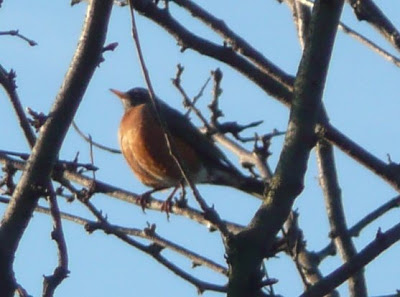Spring means Color
Male birds put on their breeding plumage and begin singing, claiming territory and attracting mates. In the park, the goldfinch is back (a goldfinch, anyway), his scruffy winter plumage all bright and shiny, so loud and so tiny. Redwing blackbirds, their shoulder patches blazing, congregrate and scuffle - five males ranging over territory one, or maybe two, of them will hold over the summer. And the females come... Cardinals shed their winter gray and flame-red whistle from the branches. Robins, looking much the same as they always do, go berserk, chasing each other, and even chasing mockingbirds, which those gray devils must find a new and strange experience. Grackles also gather and begin pairing off. Finches and song sparrows give it their all, too. Even the geese split off from their flocks... New life, celebrated in new song.











































2 Comments:
-
At 12:46 PM, April 19, 2009
 Deborah Godin had this to say...
Deborah Godin had this to say...
-
-
At 11:45 AM, June 04, 2011
 Tyler had this to say...
Tyler had this to say...
-
-
<-- Older Post ^ Home Newer Post -->A friend and fellow birder of mine always said the 2-note chickadee song (which we did hear in winter, but not as often as in the spring) was the courting male going, "Hey bay-bee, hey bay-bee" Don't know if females sing this song, too, but my friend's version makes a charming thought.
Breeding finches can be a task.. but also a good hobby for most bird lovers that have pets such as the goldfinch pictured above. Keep in mind, if you plan to breed finches and you provide the wrong diet, then your birds are likely not to mate. A little research on the nutritional needs of finch mating is worth it if you want to breed the birds successfully. :)
Post a Comment
Subscribe to Post Comments [Atom]